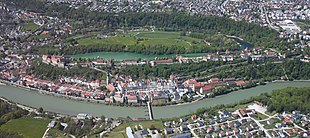
The House of Wittelsbach is a former Bavarian dynasty, with branches that have ruled over territories including the Electorate of Bavaria, the Electoral Palatinate, the Electorate of Cologne, Holland, Zeeland, Sweden, Denmark, Norway, Hungary, Bohemia, and Greece. Their ancestral lands of Bavaria and the Palatinate were prince-electorates, and the family had three of its members elected emperors and kings of the Holy Roman Empire. They ruled over the Kingdom of Bavaria which was created in 1805 and continued to exist until 1918.

Ingolstadt is an independent city on the Danube in Upper Bavaria with 139,553 inhabitants. Around half a million people live in the metropolitan area. Ingolstadt is the second largest city in Upper Bavaria after Munich and the fifth largest city in Bavaria after Munich, Nuremberg, Augsburg and Regensburg. The city passed the mark of 100,000 inhabitants in 1989 and has since been one of the major cities in Germany. After Regensburg, Ingolstadt is the second largest German city on the Danube.

Landshut is a town in Bavaria in the south-east of Germany. Situated on the banks of the River Isar, Landshut is the capital of Lower Bavaria, one of the seven administrative regions of the Free State of Bavaria. It is also the seat of the surrounding district and has a population of more than 75,000. Landshut is the largest city in Lower Bavaria, followed by Passau and Straubing, and Eastern Bavaria's second after Regensburg.
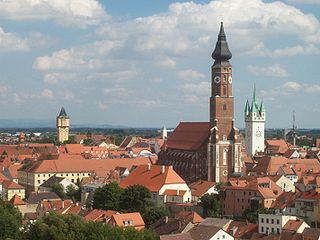
Straubing is an independent city in Lower Bavaria, southern Germany. It is seat of the district of Straubing-Bogen. Annually in August the Gäubodenvolksfest, the second largest fair in Bavaria, is held.

The Duchy of Bavaria was a frontier region in the southeastern part of the Merovingian kingdom from the sixth through the eighth century. It was settled by Bavarian tribes and ruled by dukes (duces) under Frankish overlordship. A new duchy was created from this area during the decline of the Carolingian Empire in the late ninth century. It became one of the stem duchies of the East Frankish realm which evolved as the Kingdom of Germany and the Holy Roman Empire.

The Residenz in central Munich is the former royal palace of the Wittelsbach monarchs of Bavaria. The Residenz is the largest city palace in Germany and is today open to visitors for its architecture, room decorations, and displays from the former royal collections.
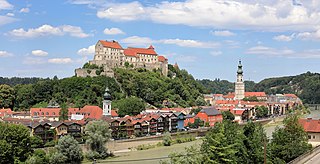
Burghausen is the largest town in the Altötting district of Upper Bavaria in Germany. It is situated on the Salzach river, near the border with Austria. Burghausen Castle rests along a ridgeline, and is the longest castle in the world.
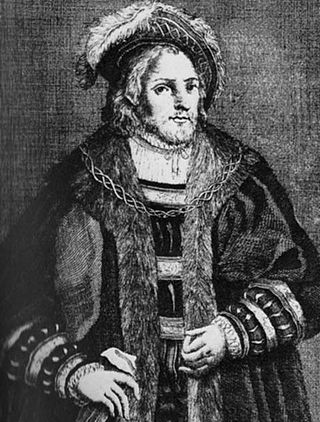
Henry XVI of Bavaria, , since 1393 Duke of Bavaria-Landshut. He was a son of duke Frederick and his wife Maddalena Visconti, a daughter of Bernabò Visconti.

Louis IX was Duke of Bavaria-Landshut from 1450. He was a son of Henry XVI the Rich and Margaret of Austria. Louis was the founder of the University of Ingolstadt.
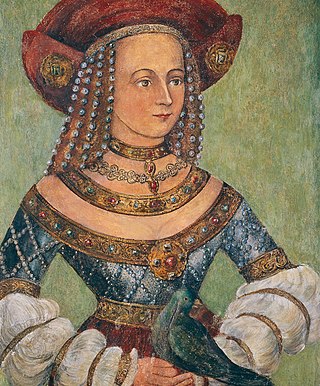
Hedwig Jagiellon, baptized as "Hedwigis", was a Polish princess and member of the Jagiellonian dynasty, as well as Duchess of Bavaria by marriage.

Trausnitz Castle is a medieval castle situated in Landshut, Bavaria in Germany.

Henry XIII, member of the Wittelsbach dynasty, was Duke of Lower Bavaria.

The Alter Hof in the center of Munich is the former imperial residence of Louis IV, Holy Roman Emperor and consists of five wings: Burgstock, Zwingerstock, Lorenzistock, Pfisterstock and Brunnenstock. Like most of the old town, it was rebuilt after being destroyed in World War II.

Bavaria-Landshut was a duchy in the Holy Roman Empire from 1353 to 1503.

This article gives an overview about the architecture of Munich, Germany.
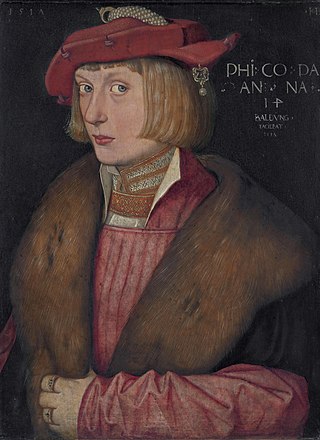
Philip the Contentious, a member of the Wittelsbach dynasty, was a titular Count Palatine of the Rhine and ruling Duke of Palatinate-Neuburg from 1505 to 1541.

Wittelsbach Castle was a castle near Aichach in today's Bavarian Swabia.

Amalia of Saxony was a princess of Saxony and by marriage Duchess of Bavaria-Landshut.
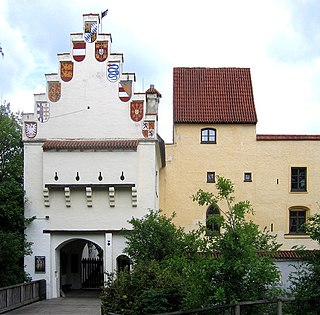
Grünwald Castle is a medieval hill castle in Grünwald, Bavaria.

